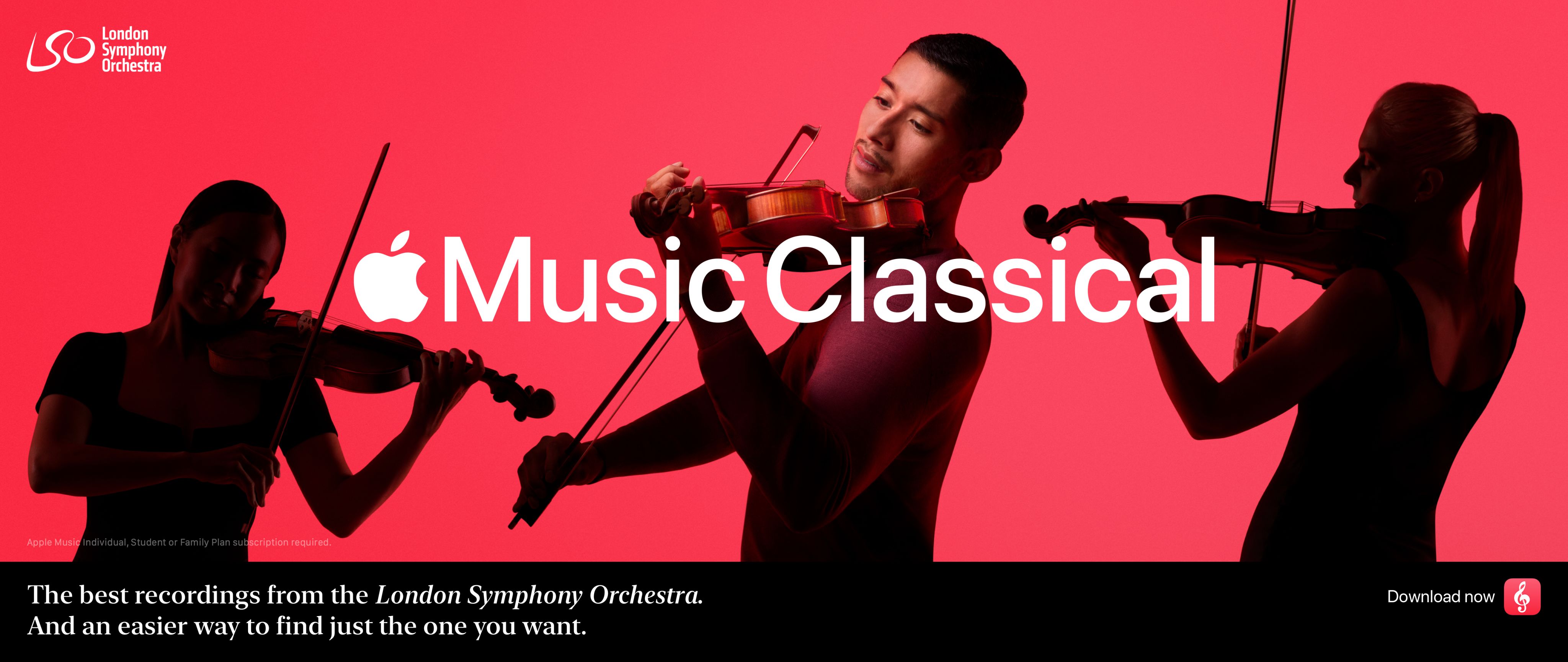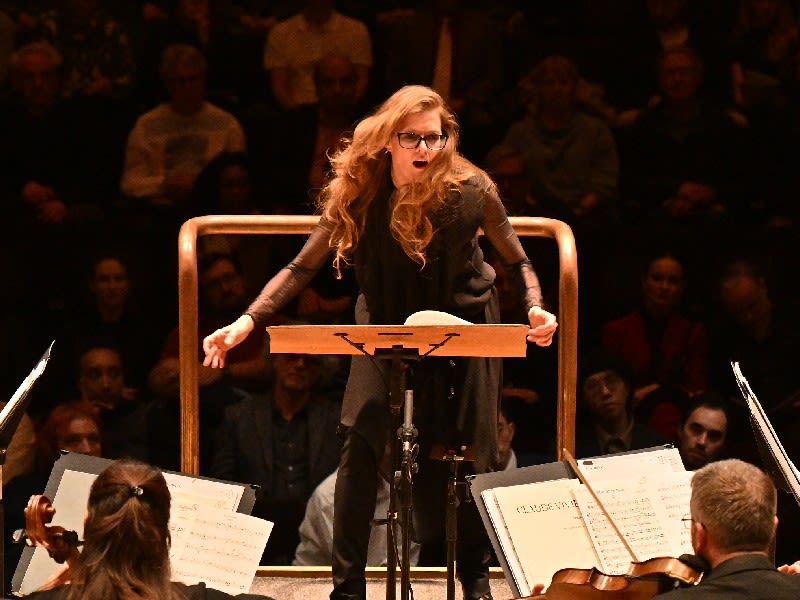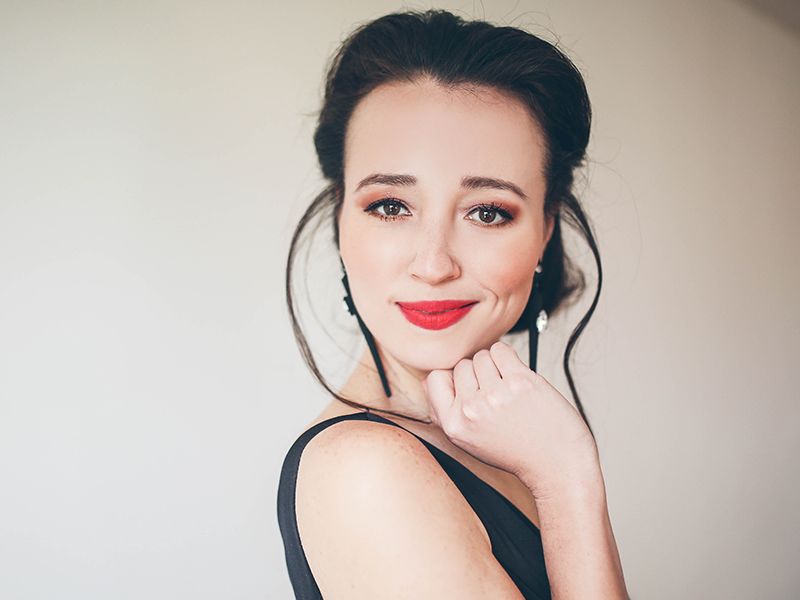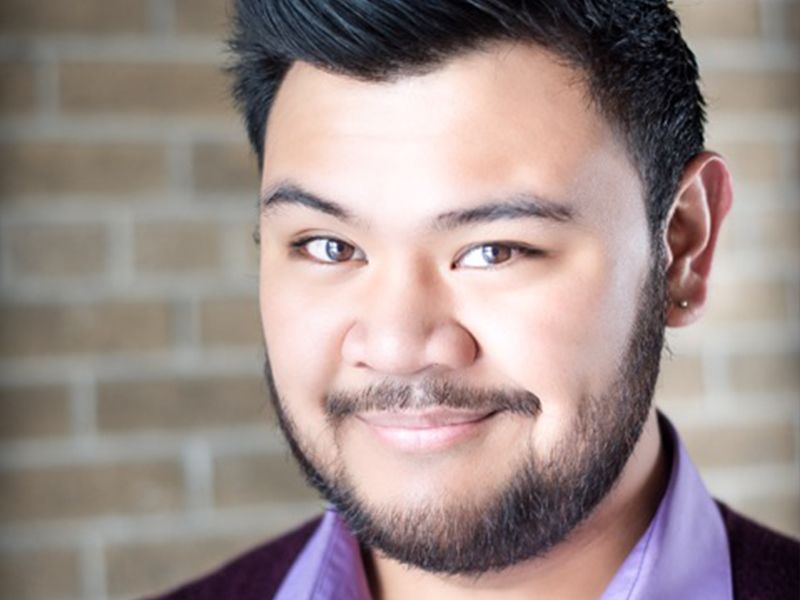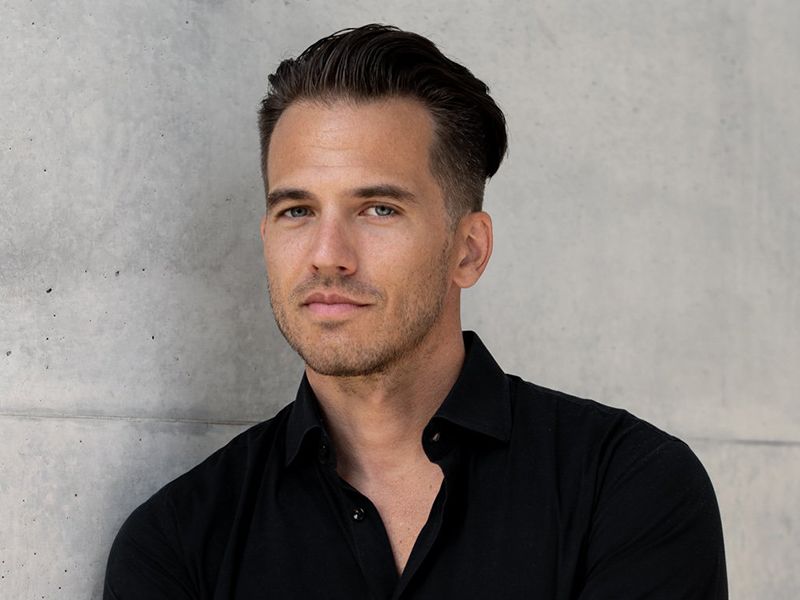Half Six Fix
Stravinsky's Pulcinella
Digital Concert Guide
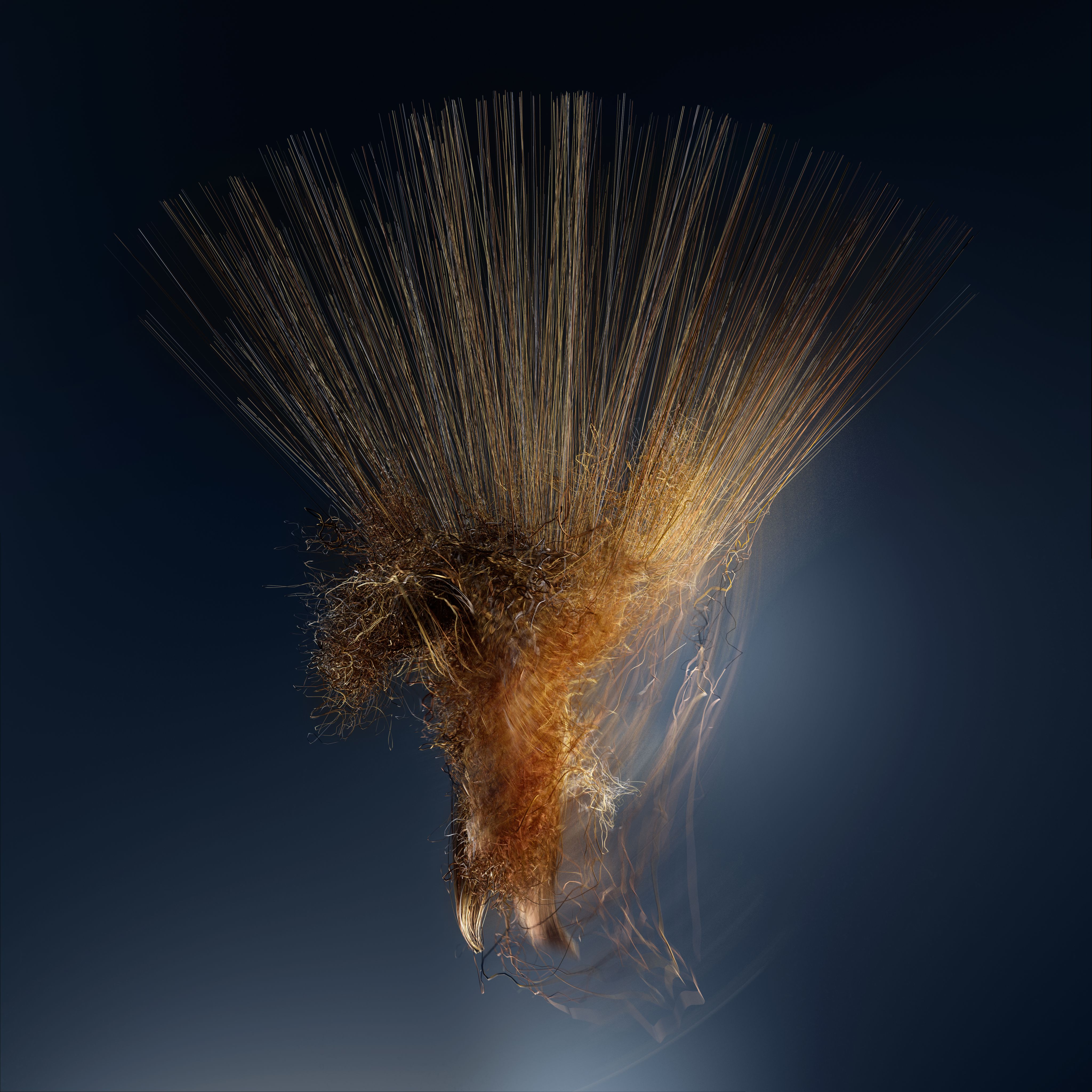
THE CONCERT
Wednesday 20 September 6.30pm
Igor Stravinsky Pulcinella – Ballet
Barbara Hannigan conductor & presenter
Fleur Barron mezzo-soprano
Charles Sy tenor
Douglas Williams bass-baritone
London Symphony Orchestra
USING YOUR DIGITAL CONCERT GUIDE
- Navigate using the menu icon (≡) at the top of the screen.
If you're using this guide while enjoying the concert:
- Connect to the Barbican Free WiFi network in the Concert Hall.
- Please set your phone to silent and don't use other apps during the music.
Welcome to tonight's Half Six Fix, a different way to experience the London Symphony Orchestra.
In tonight's concert, savour the perfect balance of sweet and bitter in Stravinsky’s time-warp drama for three voices, a quirky, romantic, commedia-del-arte fantasy.
Igor Stravinsky
Pulcinella – Ballet
✒️ 1919–20 | ⏰ 35 minutes

Probably nothing before or since has shocked the world of music (or dance) as forcefully as The Rite of Spring, Igor Stravinsky’s third ballet (after The Firebird and Petrushka) for Serge Diaghilev’s Ballets Russes company in 1913. But Pulcinella, Stravinsky’s fourth ballet for the canny impresario, seven years later, nevertheless marked a new revolution. It was a glance back at the transparency, clarity and balance of the 18th century, but also the start of a new, neo-Classical period in Stravinsky’s music, and in music as a whole. Gone was the rhythmically complex, multi-layered score, and the jerky, flat-footed choreography of The Rite. Gone too was the influence of Russia: in 1914, at the start of World War I, the composer had left his homeland and moved to Switzerland, immediately soaking in the European influences.
The music for Pulcinella was a response to Diaghilev’s idea for Stravinsky to re-orchestrate some 18th-century pieces. The music, mostly chamber music or for solo harpsichord, was supposedly composed by Pergolesi (though most turned out not to be). Diaghilev had found it in the Naples Conservatory and at the British Museum. Stravinsky largely preserved the bass lines and melodies, but rather than merely orchestrate ‘Pergolesi’ (or his contemporaries), he added in his own piquant harmonies and subtle rhythmic displacements and disruptions. Like today’s samplers, he twisted the original material to appear in his own image.
Deface – Without Disgrace
While some criticised Stravinsky for 'desecrating' the music of the past in Pulcinella, British composer Constant Lambert, a key figure in British ballet, saw a childlike fascination. 'Stravinsky is like a child delighted with a book of 18th-century engravings, yet not so impressed that it has any twinges of conscience about reddening the noses or adding moustaches and beards in thick black pencil.'
According to Stravinsky, Diaghilev was so shocked at the level of his interventions that the impresario ‘went about for a long time with a look that suggested The Offended Eighteenth Century’. In fact, Stravinsky had shown admirable restraint: ‘The remarkable thing about Pulcinella,’ he claimed, ‘is not how much but how little has been added or changed.’ He was criticised for writing pastiche, creating ‘simple’ music and abandoning modernism, but in fact he had created a suitably quirky, fleet-footed score, every bit as chic and modern as the Ballets Russes itself, and in line with the Cubist sets designed for the ballet by none other than Pablo Picasso.
The ballet’s scenario arose from research at the Royal Palace Library in Naples by Diaghilev’s young star choreographer, Léonide Massine, on the Italian commedia dell’arte (popular in the 16th to 18th centuries) and its comic stock characters.
Caught Short in Naples
Stravinsky visited Naples – the spiritual home of Pulcinella – with Diaghilev, Massine and Picasso in spring 1917, during which they attended a commedia dell’arte performance ‘in a small room reeking of garlic’. Stravinsky and Picasso were arrested for urinating against the wall of the Galleria Umberto I. Only when someone vouched for them at the Teatro San Carlo across the road did the policeman let them go.
It's worth noting that the three vocal soloists – soprano, tenor and bass – do not play specific characters, but are sung offstage in a ballet performance. As The Times' reviewer commented after Pulcinella’s first UK performance, at Covent Garden on 10 June 1920, ‘We are not very sure as to what the story actually is, and do feel pretty sure that it does not much matter.’
After enjoying the attentions of Prudenza and Rosetta, Pulcinella – traditionally a masked, figure with a pointed hat – is targeted by their jealous boyfriends, Florindo and Cloviello. Pre-empting an attack, the wily Pulcinella employs a double, who feigns death, thereby allowing Pulcinella (disguised as a magician) to ‘revive’ the body to everyone’s bewilderment. Meanwhile, Florindo and Cloviello appear to their girlfriends dressed as Pulcinella in the hope of a more successful amorous response. The real Pulcinella intervenes but is magnanimous, and at the end of the ballet the three couples are married, with Pulcinella taking Pimpinella (who has forgiven his dalliances) as his wife.
Best Foot Backwards
Four other examples of neo-Classical works based on specific predecessors to search for after the concert …
Sergei Prokofiev’s Symphony No 1, ‘Classical’ (1916–17)
Prokofiev wrote: ‘It seemed to me that, had Haydn [1732–1809] lived to our day, he would have retained his own style while accepting something of the new at the same time. This was the kind of symphony I wanted to write: a symphony in the Classical style.’
Richard Strauss’ Le bourgeois gentilhomme (1911–18)
An elegant suite drawing on Strauss’ incidental music for an adaptation of Molière’s play Le bourgeois gentilhomme; it borrows from Jean-Baptiste Lully (1632–87), who had originally composed the music for Molière’s play.
Maurice Ravel’s Le tombeau de Couperin (1914–17)
A suite for piano (most of it later orchestrated) recalling the dance types found in the keyboard suites of François Couperin the elder (1668–1733).
Cheryl Frances-Hoad’s Your Servant, Elizabeth (2022)
Drawing on the anthem O Lord, make thy servant Elizabeth by William Byrd (1543–1623) and interspersing it with words spoken by Her Late Majesty Queen Elizabeth II.
Text & Translation
SERENATA: LARGHETTO
(tenor)
Mentre l’erbetta
pasce l’agnella,
sola, soletta
la pastorella
tra fresche frasche
per la foresta
cantando va.
While the lamb grazes,
the shepherdess,
all alone
amid the leafy groves,
goes singing
through the wood.
ANCORA POCO MENO: CONTENTO FORSE VIVERE
(mezzo-soprano)
Contento forse vivere
nel mio martir potrei
se mai potessi credere
che, ancor lontan, tu sei
fedele all’amor mio,
fedele a questo cor.
Perhaps I might live content
in my torment
if I could but believe that,
though far away,
you were faithful to my love,
faithful to this heart.
ALLEGRO – ALLA BREVE: CON QUESTE PAROLINE
(bass-baritone)
Con queste paroline
così saporitine
il cor voi mi scippate
dalla profondità.
Bella, restate qua,
che se più dite appresso
io cesso morirò.
Così saporitine
con queste paroline
il cor voi mi scippate,
morirò, morirò.
With such delightful
sweet words
you tear out my heart
from its very roots.
Fair one, stay here,
for if you speak on
I shall die without you.
With such delightful
sweet words
you tear out my heart,
I shall die, I shall die.
TRIO: ANDANTE: SENTO DIRE NO’NCÈ PACE
(mezzo-soprano, tenor, bass-baritone)
Sento dire no’ncè pace.
Sento dire no’ncè cor.
ma chiù pe’tte, no, no,
no ace pace.
Chi disse cà la femmena
sacchiù de farfariello
disse la verità.
I hear it said there’s no peace,
I hear it said there’s no heart;
but for you, alas, no,
there’s no peace.
He who says that a woman
is more wily than the devil
speaks the truth.
ALLEGRO: NCÈ STA QUACCUNA PÒ
(mezzo-soprano)
Ncè sta quaccuna pò
che a nullo vuole bene
e à ciento ‘nfrisco tene
schitto pe’ scorcoglia,
e a tant’autre malizie
chi maie le ppò contà.
(tenor)
Una te fa la nzemprece
ed è malezeosa,
‘n autra fa la schefosa
e bòlo maretiello.
Chia chillo tene ‘ncora
e a tant’autre malizie
chi mai le ppò contà?
chi maie le stà a repassà?
There are women who love no one
and keep a hundred on a string,
openly deceiving them all,
thinking they’re the only one in the nest,
and up to so many tricks
that no one could count them.
One woman feigns innocence
yet is cunning,
another acts hard to please
yet longs for a husband:
one holds on tight to a man
yet is up to so many tricks
that no one could count them.
Who could even account for them all?
PRESTO: UNA TE FA LA NZEMPRECE
(tenor)
Una te fa la nzemprece
ed è malezeosa,
‘n autra fa la schefosa
e bòlo maretiello.
ncè sta quaccuna pò
che a nullo – udetene –
chi a chillo tene ‘ncore
e a cchisto fegne amore
e a cciento nfrisco tene
schitto pe’ scorcoglia,
e a tant’autre malizie
chi maie le ppo’ conta’.
One woman feigns innocence yet is cunning,
another acts hard to please
yet longs for a husband.
There are some, too, who love no one –
listen to me
one holds on tight to a man,
pretending she loves him,
and keeps a hundred on a string,
openly deceiving them all,
thinking they’re the only one in the nest,
and up to so many tricks
that no one could count them.
ANDANTINO: SE TU M’AMI
(mezzo-soprano)
Se tu m’ami, se tu sospiri
sol per me, gentil pastor,
ho dolor de’ tuoi martiri,
ho diletto del tuo amor,
ma se pensi che soletto
io ti debba riamar,
pastorello, sei soggetto
facilmente a t’ingannar.
Bella rosa porporina
oggi Silvia sceglierà,
con la scusa della spina
doman poi la sprezzerà.
Ma degli uomini il consiglio
io per me non seguirò.
Non perchè mi piace il giglio
gli altri fiori sprezzerò.
If you love me,
if for me alone you sigh, gentle shepherd,
I grieve for your suffering,
I delight in your love.
But if you think
that in return I should love you alone,
dear shepherd,
you’re likely to be easily proved wrong.
Sylvia may select today
a beautiful crimson rose
but tomorrow will spurn it
on the pretext of a thorn.
But, for my part,
I won’t follow men’s advice:
just because I like the lily
I won’t scorn other flowers.
TEMPO DI MINUETTO: PUPILLETTE, FIAMMETTE D’AMORE
(mezzo-soprano, tenor, bass-baritone)
Pupillette, fiammette d’amore,
per voi il core struggendo si va.
Fair eyes, sparkling with love,
for you my heart is breaking.
Igor Stravinsky
composer
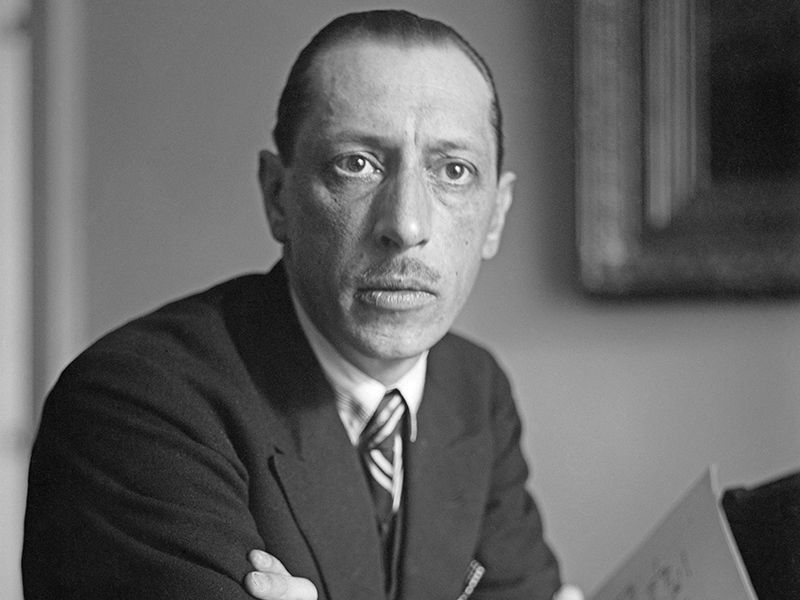
Igor Stravinsky’s unrivalled impact on the course of 20th-century music began with the complexity of his first ballets for Diaghilev’s Ballets Russes: The Firebird (1910), Petrushka (1911) and The Rite of Spring (1913). Original as they were, they also owed much to the Russian folk tradition.
With his move to Switzerland and then Paris during World War I, and another ballet, Pulcinella (1920), came a shift to the sharp-edged clarity of the neo-Classical style, which also characterises his Octet (1923), the Piano Concerto (1924) and other works well into the 1940s.
In the eight months to June 1939, Stravinsky suffered the loss of his daughter, wife and mother in turn and, with war impending, decamped to the US, where he undertook numerous conducting tours, and composed The Rake’s Progress (1951).
In the 1950s, ever in tune with the times, Stravinsky made another compositional change, in which he embraced Arnold Schoenberg’s technique of serialism (where notes are used in a predetermined order, as in the 1957 ballet Agon and the 1958 cantata Threni). We can hear Stravinsky's interpretations of his own music in the many recordings he made of them, as both conductor and pianist.

The Performers

Barbara Hannigan
LSO Associate Artist
Soprano and conductor Barbara Hannigan is an artist at the forefront of creation. Her artistic colleagues include John Zorn, Krszysztof Warlikowski, Sir Simon Rattle, Sasha Waltz, Kent Nagano, Vladimir Jurowski, John Zorn, Andreas Kriegenburg, Andris Nelsons, Esa-Pekka Salonen, Christoph Marthaler, Sir Antonio Pappano, Katie Mitchell and Kirill Petrenko. The late conductor and pianist Reinbert de Leeuw greatly influenced her development as a musician. Hannigan has given the world premiere performances of over 90 new creations, and has collaborated extensively with composers including Boulez, Zorn, Dutilleux, Ligeti, Stockhausen, Sciarrino, Barry, Dusapin, Dean, Benjamin and Abrahamsen.
Fleur Barron
mezzo-soprano
Singaporean-British mezzo-soprano Fleur Barron recently triumphed in the title role of Kaija Saariaho’s opera Adriana Mater with the San Francisco Symphony Orchestra, and as Ottavia (Monterverdi’s L’incoronazione di Poppea) at the Aix-en-Provence Festival. She is a current Rising Star at the Concertgebouw in Amsterdam and an Artistic Partner of the Orquesta Sinfonica del Principado de Asturias in Oviedo. She is a former Equilibrium Young Artist and is mentored by Barbara Hannigan. In 2023/24, she debuts two opera roles: Penelope in Monteverdi’s Il Ritorno d’Ulisse in patria with Baroque ensemble I Gemelli; and multiple roles in George Benjamin’s two-person opera Into the Little Hill with the Staatskapelle Berlin under Finnegan Downie Dear.
Charles Sy
tenor
Canadian tenor Charles Sy is a member of the Stuttgart State Opera, where during the 2023/24 season he will sing Nemorino (Donizetti’s L’elisir d’amore), Tamino (Mozart’s The Magic Flute) and Elvino (Bellini’s La sonnambula). Recent appearances in Stuttgart include Count Almaviva (Rossini’s The Barber of Seville), a staged St John Passion and Don Ramiro (Rossini’s La Cenerentola). Recent concert appearances include Mozart’s Requiem with the Orchestre Philharmonique de Radio France under Barbara Hannigan and with the Toronto Symphony Orchestra under Andrew Davis, an evening of operatic favourites with the Calgary Philharmonic, and the recital La terre et le ciel at the Aix-en-Provence Festival alongside Hannigan.
Douglas Williams
bass-baritone
Bass-baritone Douglas Williams has, in the last few seasons, made a name for himself in several leading roles, including Figaro in Mozart's The Marriage of Figaro with Edo de Waart and the Milwaukee Symphony Orchestra, Don Giovanni (also by Mozart) with Opera Atelier conducted by David Fallis, and Nick Shadow in Stravinsky's The Rake’s Progress with Barbara Hannigan and the Munich Philharmonic, all to great acclaim. This season he continues his collaboration with Hannigan in Stravinsky’s Pulcinella, with L’Orchestra Philharmonique de Radio France, and a new production of Jonathan Dove’s monodrama, The Other Euridice.
London Symphony Orchestra
At the London Symphony Orchestra we strive to inspire hearts and minds through world-leading music-making. We were established in 1904, as one of the first orchestras shaped by its musicians.
Through inspiring music, a world-leading learning and community programme and technological innovations, our reach extends far beyond the concert hall.
On Stage
Leader
Benjamin Gilmore
First Violins
Noé Inui
Ginette Decuyper
Maxine Kwok
Stefano Mengoli
Claire Parfitt
Elizabeth Pigram
Harriet Rayfield
Second Violins
Olatz Ruiz de Gordejuela
Thomas Norris
Sarah Quinn
Miya Väisänen
Matthew Gardner
Alix Lagasse
Belinda McFarlane
Iwona Muszynska
Andrew Pollock
Paul Robson
Csilla Pogány
Violas
Jano Lisboa
Gillianne Haddow
Anna Bastow
Steve Doman
Julia O'Riordan
Sofia Silva Sousa
Robert Turner
Mizuho Ueyama
Cellos
David Cohen
Alastair Blayden
Ève-Marie Caravassilis
Daniel Gardner
Laure Le Dantec
Judith Fleet
Double Basses
Rodrigo Moro Martin
Patrick Laurence
Joe Melvin
Adam Wynter
Flutes
Gareth Davies
Fanny Morel
Oboes
Olivier Stankiewicz
Henrietta Cooke
Bassoon
Rachel Gough
Martin Field
Horns
Eirik Haaland
Angela Barnes
Trumpet
James Fountain
Trombone
Peter Moore
Explore music by the London Symphony Orchestra like never before with the new Apple Music Classical app, included with your Apple Music subscription.
For playlists and more visit lso.co.uk/fix.


